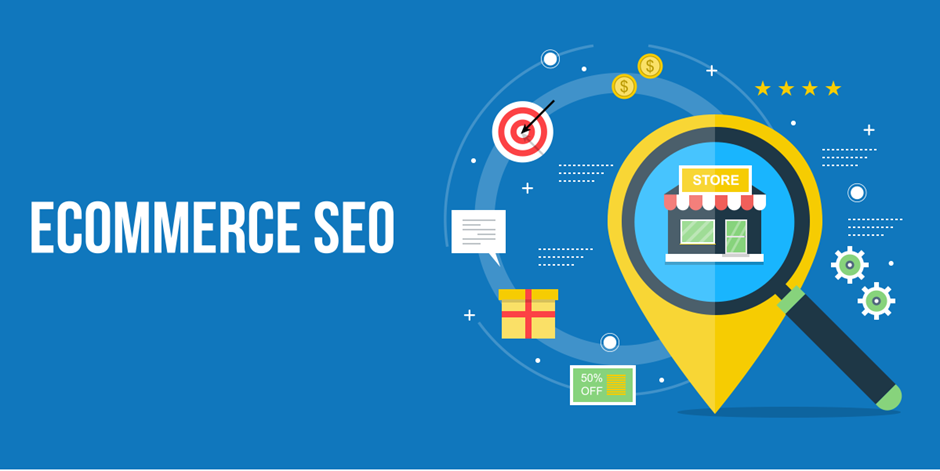In today’s competitive online marketplace, having an e-commerce website is just the beginning.
To drive organic traffic and convert visitors into customers, optimizing your online store for search engines is crucial.
This article will guide you through actionable steps to elevate your e-commerce SEO and boost your rankings.
1. Conduct In-Depth Keyword Research
Keyword research is the foundation of your SEO strategy. For e-commerce, it’s essential to focus on both short-tail and long-tail keywords that reflect user intent. Here’s how to approach it:
- Product-Focused Keywords: Start by identifying keywords that are directly related to the products you sell. Tools like SEMrush, Ahrefs, or Google Keyword Planner can help you discover relevant keywords.
- Category Keywords: Don’t just optimize for product pages; also target category-level keywords. For example, if you sell shoes, optimize category pages for terms like “men’s running shoes” or “women’s leather boots.”
- Search Intent: Identify the search intent behind keywords. Are users looking for information (informational), ready to buy (transactional), or just comparing products (navigational)? Optimize your content to align with these intents.
2. Optimize On-Page SEO Elements
Title Tags & Meta Descriptions:
- Title Tags should be concise (under 60 characters) and include the main keyword naturally. For example, “Buy Men’s Running Shoes | Top Sports Footwear Online.”
- Meta Descriptions should provide a brief, compelling summary of the page content (under 155 characters), enticing users to click through. Include a call to action like “Shop Now” or “Free Shipping.”
Product Descriptions:
- Write unique, detailed product descriptions that not only describe features but also address customer pain points and benefits. Avoid using manufacturer descriptions, as these may lead to duplicate content issues.
- Include relevant keywords naturally, but avoid keyword stuffing. Focus on readability and engagement.
Internal Linking:
- Use internal links to connect related products, categories, and informational pages. This not only helps users navigate your site but also improves your site’s crawlability and relevance in search engines.
URL Structure:
- Keep URLs short, descriptive, and keyword-focused. Use hyphens to separate words and avoid unnecessary parameters. For example:
www.yourstore.com/men-running-shoes
3. Technical SEO for E-Commerce
Site Speed Optimization:
- Google values fast-loading sites, and a slow e-commerce site can hurt your rankings. Compress images, leverage browser caching, and use content delivery networks (CDNs) to improve load times.
Mobile-Friendly Design:
- Ensure that your e-commerce website is fully responsive and offers a seamless mobile shopping experience. Google’s mobile-first indexing means the mobile version of your site is prioritized, so make sure it loads quickly and is easy to navigate on smaller screens.
HTTPS Security:
- Use an SSL certificate to secure your website with HTTPS. This is a ranking factor and also builds trust with your customers by ensuring their transactions and data are safe.
Fix Duplicate Content Issues:
- E-commerce sites often face duplicate content issues, especially with similar product descriptions or paginated categories. Use canonical tags to signal the preferred version of a page to search engines.
Structured Data:
- Implement schema markup to help search engines understand your content better. Product schema can highlight key details such as price, availability, and reviews, which can be displayed in rich snippets.
4. Content Marketing for E-Commerce SEO
Blogging & Guides:
- Create valuable, relevant content that answers customer questions and provides buying guides. For example, write blog posts about “How to Choose the Best Running Shoes” or “Top 10 Fashion Trends for Winter.” These posts can help you rank for long-tail keywords and draw in top-of-funnel traffic.
Product Reviews and User-Generated Content:
- Encourage customers to leave reviews. Not only do reviews provide fresh content, but they also help build trust with potential buyers. Reviews can appear in search results if you use the correct structured data.
FAQs & Resource Pages:
- Build out comprehensive FAQs and resource pages. These pages can rank for long-tail queries and provide useful information to customers, helping them make purchasing decisions.
5. Off-Page SEO and Link Building
Backlinks:
- Earn high-quality backlinks from reputable websites. Consider partnering with bloggers, influencers, and industry experts for guest posts, product reviews, and features.
Social Media Sharing:
- While social signals aren’t a direct ranking factor, sharing your content and products on social platforms can help drive traffic and improve brand visibility. Optimize your product pages for social sharing with attractive images and descriptions.
Influencer Marketing:
- Partner with influencers in your niche to promote your products. This can generate buzz, backlinks, and traffic to your site.
6. User Experience (UX) Optimization
Navigation & Site Structure:
- Make sure your website is easy to navigate, with clear categories and subcategories. A well-structured site makes it easier for both users and search engines to find and index your content.
Checkout Process:
- A seamless, straightforward checkout process is key to reducing cart abandonment rates. Ensure that your site is optimized for a quick and hassle-free purchasing experience.
7. Analytics & Continuous Optimization
Track Performance:
- Use tools like Google Analytics and Google Search Console to monitor traffic, rankings, and user behavior. Track key metrics like organic traffic, bounce rate, and conversion rates to continually improve your strategy.
A/B Testing:
- Run A/B tests on product pages, call-to-action buttons, and checkout processes to find the most effective strategies for boosting conversions and SEO performance.
Conclusion
E-commerce SEO is an ongoing process that requires a mix of technical SEO, on-page optimization, content marketing, and off-page strategies.
By following the steps outlined in this guide, you can boost your online store’s visibility, attract more targeted traffic, and increase sales.
Remember, SEO takes time, so be patient and consistent with your efforts. Focus on providing value to your customers, and the rankings will follow.






